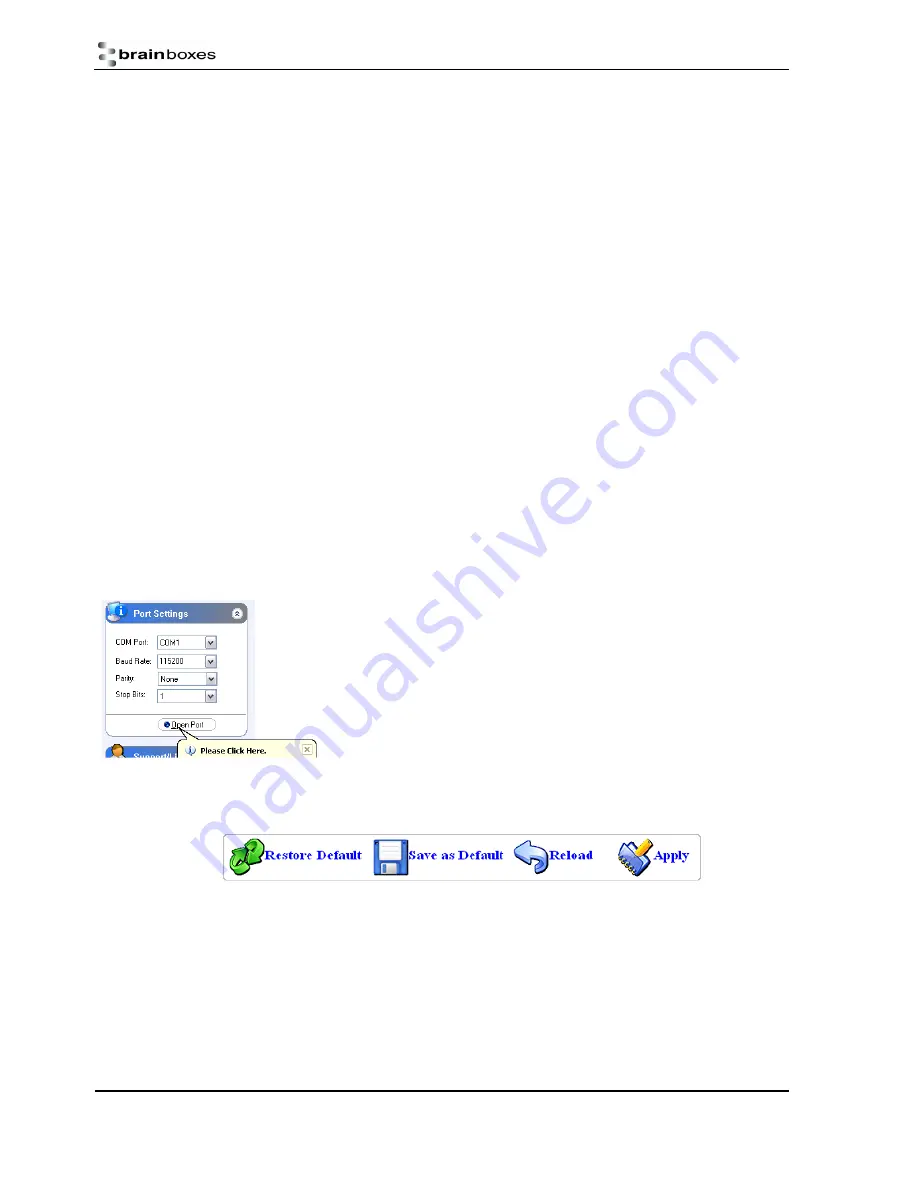
Manual for BL-819, BL-830, BL-875
V6.1
© Copyright Brainboxes Ltd
Page 6 of 40
Product Configuration
This device contains a comprehensive set of Bluetooth and COM port features which can be changed from an easy to use
Windows Configuration Application. This section gives full details about the changes that can be made, how to make them,
and the implications the changes will have on the manner in which your Adapter behaves.
1.6.
Configuration features at a glance
Below is a quick list of the configuration options that are available from the configuration application. They will be covered in
more detail later in this section.
•
View/Set local COM port settings (baud rate, parity, stop bits)
•
View/Set Discoverability, Security mode and PIN number
•
View/Set Pairing options (including pairing to another adapter)
•
View/Set Client/Server configuration (Client connects to Server – important if “pairing” 2 adapters)
•
View/Set Local Device Name and Device Class
•
View all “factory” and modified settings plus local Bluetooth Address
•
Disable command interface and configuration menu
•
Permanently update “factory” settings
•
Upgrade Device Firmware
1.7.
Using the Configuration Utility
The Configuration Utility will display allowing selection of the appropriate COM port settings for the Adapter device you have
attached to the port:
COM Port: Select the port number of the COM port to which you have attached your
adapter. Select “Auto” if you don’t know the number and the utility will attempt to
find the device for you.
Other Settings: Select the other parameters to match those that have been set on the
adapter. If you don’t know them, select “auto” and the utility will attempt to find the
device for you. The default parameters for the adapters are 115200 baud, No Parity
and 1 Stop bit.
When the device has been opened in the Configuration Utility, at the bottom of the application there will be four ‘action’
icons. These can be used to restore the local RS-232 Bluetooth Adapter to its default settings, save the current settings as
default settings, reload the current settings and apply the current settings:
The feature that allows a user to change the default configuration settings on their Adapter would be useful in cases where
the Adapter was in use in an application where the physical security of the Adapter couldn’t be guaranteed. If the application
required that the settings were very different from the original factory settings then if a long reset were performed (restoring
default settings) the application would no longer work until the Adapter was reconfigured. Updating the default settings to
the required ones means that should a long reset be performed the device will power up with the settings required by the
application.





















